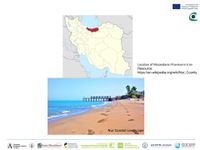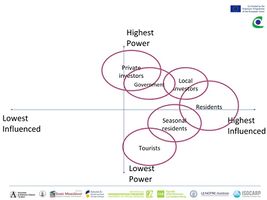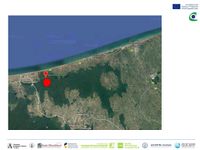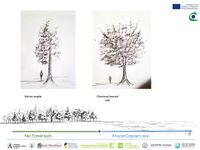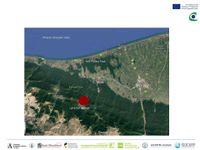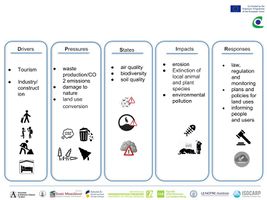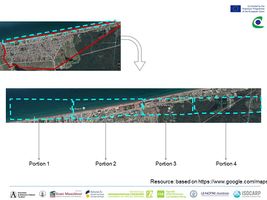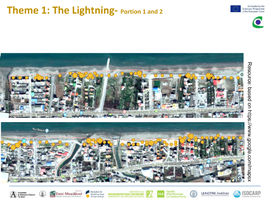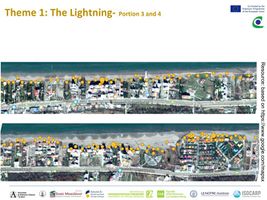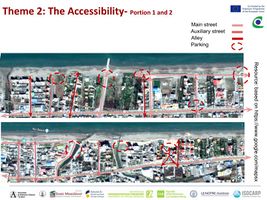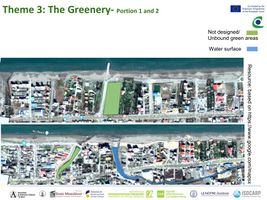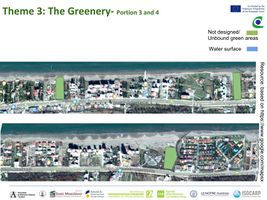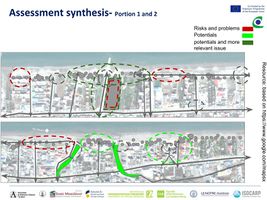Caspian Sea Nur Beach: Difference between revisions
| Line 99: | Line 99: | ||
== A.3 Theory reflection == | == A.3 Theory reflection == | ||
* '' | '''* ''Building a green infrastructure for Europe''' | ||
* '' | Different environmental features which function in different scales, can be considered as GI. Although not any green area can be included, it needs to act in a more multifunctional way such as a cool air corridor or an encouraging place for biodiversity. | ||
* '' | Spatial planning is one of the effective ways to build GI, including strategic levels of locate the best places (for habitat enhancement projects), guide infrastructure developments towards robust areas and also identify multi functional zones. The benefits would appear in different aspects such as environmental, social, climate change adaptation and biodiversity. '' | ||
'''* ''Sustainable Development Goals''' | |||
On 2015, 17 main goals were set focusing on end of poverty, protect the planet and ensure prosperity for all. As examples of these goals good health and well-being (considering aspects such as clean water and sanitation, reducing malaria and the spread of HIV/AIDS), affordable and clean energy (considering aspects such as renewable sources, modern energy and efficiency) and sustainable cities and communities (considering aspects such as transportation, housing, energy and infrastructure) can be mentioned. For achieving these goals -in the next 15 years- the cooperation among governments, private sector, civil society and people would be needed.'' | |||
'''* ''European Commission Marine Strategy Framework Directive''' | |||
Marine and coastal environments is experienced the effect of pollution from land and ocean sources. Hence for preserving the marine and coastal zone, the marine directive framework as a first EU legislation was established which is promoting a sustainable use of marine waters. Good environmental status (GES) of Europe’s waters by 2020 is the major goal of the marine directive framework. While besides maintaining the water, economic and social sector related to marine zone are plays and important role. | |||
The directive sets up European marine regions and sub regions based on geographical and environmental criteria and it lists four marine regions; The Baltic sea, the North-East Atlantic Ocean, the Mediterranean Sea and the Black sea. Each member state needs to devise a strategy for its marine water and it should be kept up to dated and reviewed every 6 years. Now, the second cycle of the process is started in 2018.'' | |||
== A.4 References == | == A.4 References == | ||
Revision as of 19:51, 22 May 2018
>>>back to working groups overview
| Area | Caspian Sea, North of Iran | |
| Place | Nur Caunty | |
| Country | Iran | |
| Topics | Nur Beach | |
| Author(s) | Yasaman Rahimi, Fardokht Hadji Salimi | |
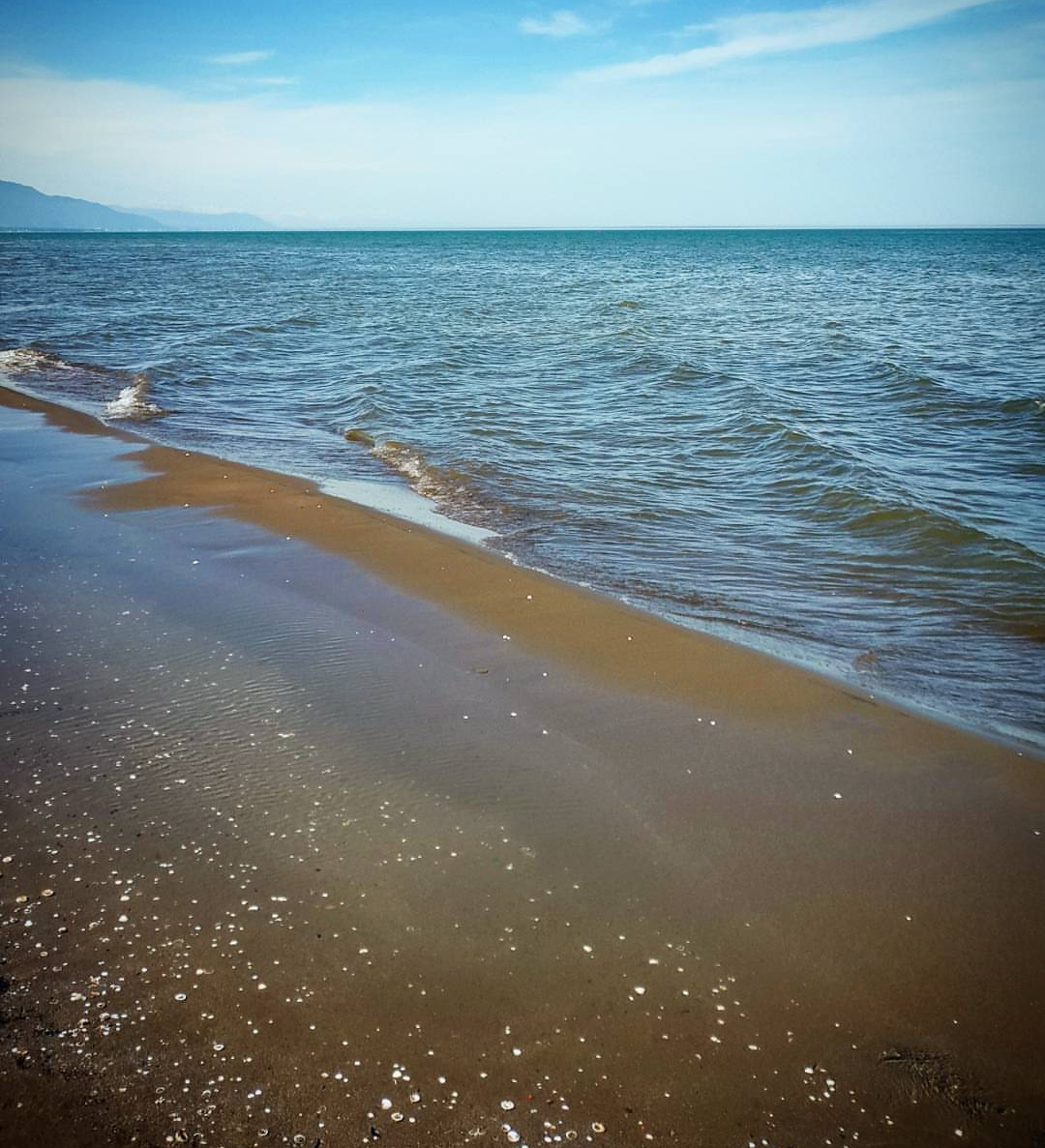
| ||
Rationale
- Why do you think this case is relevant? What is your hypothesis considering the landscape challenges?
- Format: 3-4 sentences
Location and scope
You can edit this map with the map editor
A Landscape System Analysis
A.1 Landscape layers and their system context
Geomorphology, landscape units and coastal typology
In Nur the Green & Blue are besides. Nur County by having beautiful parts of Caspian sea is one of the most important tourism regions in Iran and the touristic development of this city has been considered in the plannings of the government. Our hypothesis: Potential to be one of the largest coland tourism poles of Iran
Land use
Green/blue infrastructure
Actors and stakeholders
It can be said a big part of the changes in this region is caused by new constructions.Here are the explanations about some of the named groups in the following Power Map:_Private Investors: Those who invest but do not leave in Nur_Local Investors: Those who invest and leave in Nur._Seasonal Residents: Those who have a house in Nur, but they leave in other cities in most of the seasons_Tourists: Those who do not have a house in Nur and come to visit this city.
Sacred spaces and heritage
Visual appearance and landscape narrative
Resource: http://tripbama.com/fa/ Access : 18.04.2018
A.2 Summary of you landscape system analysis and your development Targets
If the current situation goes on, more and more agricultural lands will be changed to commercial and residential buildings and based on low functional management, results such as air pollution, water pollution, low diversity and decrease of health of the society would occur.BUT by having a multi aspect planning and a functional management system, considering precious natural resources and future generation, Nur can become one of the great tourism poles of Iran.
A.3 Theory reflection
* Building a green infrastructure for Europe Different environmental features which function in different scales, can be considered as GI. Although not any green area can be included, it needs to act in a more multifunctional way such as a cool air corridor or an encouraging place for biodiversity. Spatial planning is one of the effective ways to build GI, including strategic levels of locate the best places (for habitat enhancement projects), guide infrastructure developments towards robust areas and also identify multi functional zones. The benefits would appear in different aspects such as environmental, social, climate change adaptation and biodiversity.
* Sustainable Development Goals
On 2015, 17 main goals were set focusing on end of poverty, protect the planet and ensure prosperity for all. As examples of these goals good health and well-being (considering aspects such as clean water and sanitation, reducing malaria and the spread of HIV/AIDS), affordable and clean energy (considering aspects such as renewable sources, modern energy and efficiency) and sustainable cities and communities (considering aspects such as transportation, housing, energy and infrastructure) can be mentioned. For achieving these goals -in the next 15 years- the cooperation among governments, private sector, civil society and people would be needed.
* European Commission Marine Strategy Framework Directive
Marine and coastal environments is experienced the effect of pollution from land and ocean sources. Hence for preserving the marine and coastal zone, the marine directive framework as a first EU legislation was established which is promoting a sustainable use of marine waters. Good environmental status (GES) of Europe’s waters by 2020 is the major goal of the marine directive framework. While besides maintaining the water, economic and social sector related to marine zone are plays and important role. The directive sets up European marine regions and sub regions based on geographical and environmental criteria and it lists four marine regions; The Baltic sea, the North-East Atlantic Ocean, the Mediterranean Sea and the Black sea. Each member state needs to devise a strategy for its marine water and it should be kept up to dated and reviewed every 6 years. Now, the second cycle of the process is started in 2018.
A.4 References
- give a full list of the references you have used for this section
Phase B: Landscape Evaluation and Assessment
B.1 Assessment Strategy
- Based on the hypothesis derived from your previous landscape systems analysis you are now asked to define the goals for assessing the landscape. Your assessment is the basis for evaluating the landscape status.
- Which elements and phenomena need to be mapped, why and how?
- This a text contribution, max 250 words
B.2 Mapping
B.3 Problem definition and priority setting
- In this level, three different layers of each portion have been overlapped. Therefore it can be seen the places which have lacks and problems (in the three themes of Lightning, Accessibility and Greenery). The places which have the boldest potentials, demonstrated by having multiple layers on them.
The lack of proper lightning can result the risk of lack of safety and also low quality of the space, which such situation is happening between of some of the residential areas. Also having the parking lots in the open spaces between the end of the streets can reduce the quality of the open space as well.
Locating main poles in Nur Beach, finding comprehensive solutions to supply the lacks, strength the potentials such as designing and make a proper plan for abounded green area, defining parking areas based on the location of the poles and streets connections, providing bicycle and pedestrian access to Nur Beach and , providing proper lightning are our major priorities.
B.4 Theory reflection
- Please reflect the assessment and evaluation methods used based on at least three readings
- Did you encounter limitations'
- 200 words test contribution
B.5 References
- give a full list of the references you have used for this section
Phase C – Strategy and Master Plan
C.1 Goal Setting
- Define strategic planning objectives based on the evaluation findings
- Link back to your original targets from section one and the Development Goals
- 150 words text contribution
C.2 Spatial Strategy and Transect
- translate your strategic goals into a vision
- develop a spatial translation of your vision
- exemplify your vision in the form of a transect with concrete interventions
- add map(s) and visualizations
- Your case spatial translaton vision.jpg
add caption here
- Your case transect.jpg
add caption here
- Your case transect detail1.jpg
add caption here
- Your case transect detail2.jpg
add caption here
C.3 From Theory of Change to Implementation
- For implementing your vision: Which partnerships are needed? Which governance model is required?
- Who needs to act and how? Draw and explain a change/process model/timeline
- Which resources are needed? On which assets can you build?
- add 150 words text and visuals
- Your case spatial your governance model.jpg
add caption here
- Your case spatial your process model.jpg
add caption here
C.4 References
- give a full list of the references you have used for this section
D. Process Reflection
- Reflect in your intercultural and interdisciplinary team on the outcomes of your study
- Which limitations were you facing?
- What have you learnt from each other?
- What would you do differently next time?
- You can also use diagrams/visuals
- 250 words text
